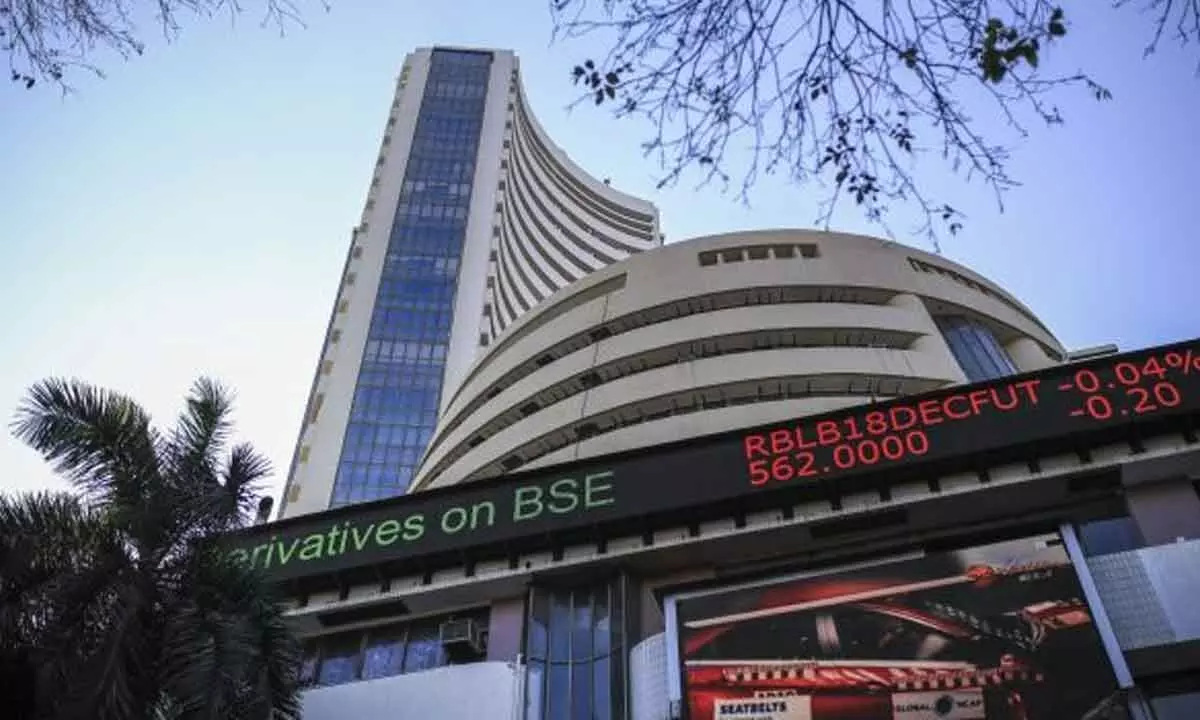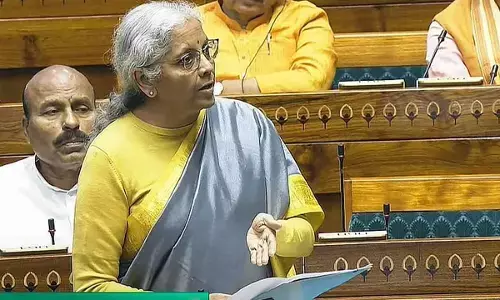Investors chary of mkt direction

Representational image
Excluding Adani Group block deals, FIIs still in a selling mode, while DIIs continue to play vital role in supporting the market
Unnerved by concerns about the health of the US financial system after the fall of SVB, possible broader impact of the Fed's interest-rate increases after reaffirmation of continuity of aggressive policy tightening by Fed Chair Jerome Powell in his Congress testimony, fears over possible El Nino effect on monsoon and lack of domestic triggers; the stock markets fell sharply during the second half of the week ended.
BSE Sensex tanked 674 points or 1.13 percent to 59,135, and NSE Nifty fell 181 points or one percent to 17,413 points. However, the broader markets showed good resilience outperforming the benchmark indices with the Nifty Midcap and Small-cap indices closing on a flat note. Excluding Adani Group block deals, FIIs are still in a selling mode. DIIs continue to play vital role and provide great support to the market which has been witnessing FII flow volatility for several months now.
The current heat wave and the unseasonal rains have reportedly led to crop damage and is likely to keep food inflation higher in the coming months. Net direct tax collection so far this fiscal grew 17 per cent to reach Rs13.73 lakh crore, which is 83 per cent of the revised target for the full financial year. The growth in direct tax mop-up, which comprises personal income-tax and corporate taxes, was driven by PIT collections. Near-term direction of the markets will be dictated by inflation data (CPI data on March 13 and WPI inflation on March 14), US inflation numbers scheduled on March 14, updates with respect to SVB Bank, which is the second banking failure in the US since the 2008 global financial crisis, ECB interest rate decision, international crude oil prices and news on China front. The broader worry is that not just Silicon Valley Bank, but that in the broader economy banks lent a lot in the good times when rates were so low, which as rates have now risen so dramatically, is going to come back to haunt them. The SVB issue spotlights the broader impact the Fed's interest-rate increases are having on the economy and banks in particular.
IPO Watch
Divgi Torqtransfer Systems is likely to list on the bourses on Tuesday. The company is one of the few players in the country that has the ability to develop and supply system level transfer cases and is the only company to make torque couplers. Most analysts say the public offer is decently valued and have recommended investors to subscribe to the issue from a long-term perspective. The IPO of Global Surfaces is set to open on Monday and will be available for subscription till Wednesday. The company has fixed a price band of Rs133-140 a share.
Listening Post
One of the best ways to make sure the easy gains of the past 10 years haven't made you complacent is to look back at the Crash of 1929. About 91 years ago, the worst stock-market crash in US history began. To this day, no one is sure why stocks crashed in 1929. The collapse of a British investment firm? Unlikely. A flood of newly issued stock? Probably not big enough. Speculators on a debt-fuelled buying spree? Lending standards on borrowings to buy stock were stricter in 1929 than in earlier years.
The likeliest culprit is tight monetary policy by the Federal Reserve. But why stocks collapsed in late October 1929 when rates had been rising since 1927 nobody can say.Reconstructing similar scenario to present circumstances, a major correction in stocks is not ruled out in second half of 2023 or first half of 2024 say doomsayers. No one who lived through the crash of 1929 would agree with the view, advanced in the late 1990s, that stocks become riskless if you hold them long enough. Investors should always regard the stock market as sailors regard the sea—a means to an end, usually benign, but potentially lethal. Catastrophic losses are rare, but their risk never goes away.To be a long-term investor in stocks, you have to be prepared to lose more money for longer than seems possible. Anyone who takes that risk lightly is likely to sell out, in the next crash, near the bottom.
Quote of the week
"Courage taught me no matter how bad a crisis gets ... any sound investment will eventually pay off." — Carlos Slim Helu
Don't despair amid the inevitable setbacks that all investors face, especially during a crisis in the market. If the reasoning behind the investment was sound, stick with it, and it should eventually turn around.
F&O / SECTOR WATCH
Under the firm control of bears, both Nifty & Bank Nifty settled the week with loss of more than one per cent. In the options segment, the maximum Call Open Interest was seen at 18,000 strike, followed by 17,500 and 17,700 strikes. On the Put side, the maximum Put OI was seen at 17,400 strike, followed by 17,300 and 17,000 strikes. The Implied Volatility (IV) of Calls closed at 11.41 per cent, while that for Put options closed at 12.29 per cent. The Nifty VIX for the week closed at 12.73 per cent. PCR of OI for the week closed at 1.26. Overall options data indicates that 17,400-17,300 are the crucial support levels in coming sessions, followed by 17,000, whereas the critical hurdles in the near term may be 17,500-17,700 area.
Technically, the Nifty has once again slipped back below its 200-Day Exponential Moving Average on daily charts, which is placed at 17,580 level and now will act, as a strong resistance for index. Bank Nifty, has its strong support area at 40,000 zone. Sectorally, banking and financial stocks witnessed fresh bout of selling, while energy and infrastructure counters witnessed short covering over the week.
Accumulate Sun Pharma and JB Chemicals also. Stock Futures looking good are Berger Paints, Balrampur Chini, Coal India, IEX, MGL, PFC and SAIL. Stock Futures looking weak are Apollo Hospitals, LIC Hsg, CUB, M&M Finance, PVR and TechMahindra.
(The author is a senior stock market analyst and former vice-chairman of AP Planning Board)

















